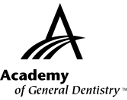|
Exercise No. 382
Subject Code: 017
Dental Materials
The 15 questions for this exercise are based on the article, Influence of irradiance on Knoop hardness, degree of conversion, and polymerization shrinkage of nanofilled and microhybrid composite resins, on pages 26-31. This exercise was developed by Jean Carlson, DDS, FAGD, in association with the General Dentistry Self-Instruction committee.
|
Reading the article and successfully completing the exercise will enable you to:
- understand the impact of irradiance on nanofilled and microhybrid composite resins;
- recognize the effects of irradiance on Knoop hardness number (KHN), degree of conversion (DC), and shrinkage; and
- understand the clinical effects of irradiance levels on both types of resin.
|

